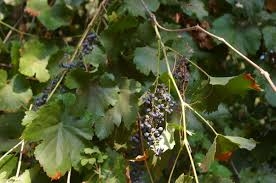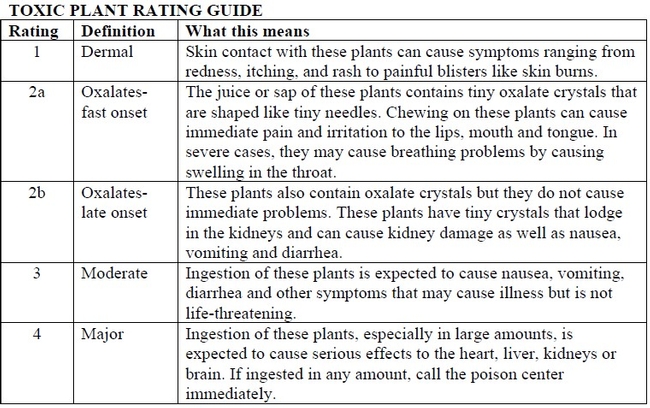By Marsha Ebert, Butte County Master Gardener, and Joseph Connell, Farm Advisor Emeritus, October 16, 2015

The best solution is to avoid growing toxic plants where pets or toddlers will have frequent unsupervised access. If a toxic plant is eaten it's important to know what part of the plant (e.g. flowers, leaves, berries or bulbs) was eaten and how much of it was ingested. It's critical to know the name of the plant (both the common name and the scientific name) for a health professional to decide the appropriate course of action. When you purchase plants, keep the tags identifying the plant or keep track of the names on a written list so you can provide the needed information to your veterinarian or health care provider when necessary.
Plants on the California Poison Control System's toxic list have been rated according to their types of toxicity. Plants on the list that are toxic to humans are generally toxic to pets as well. Visit their website for a list of toxic plants and their ratings. As you can see from the toxic plant rating guide, some types of toxicity are much more serious than others.
Some of the plants on the list that are safe for humans can be toxic to pets. Common plants that stand out on the list as harmful to pets include:
Hermocallis spp. – Day lily, Basket lily
Cordyline spp. – Palm lily, Ti plant
Dracaena spp. (many species) – Lucky bamboo, Dracaena, etc.
Lilium spp. (many species) – Easter lily, Casa Blanca lily, Tiger lily, etc.
Schefflera arboricola – Dwarf schefflera
Vitus vinifera and V. californica – Grapes and wild grapes
WHAT TO DO FOR A PLANT POISONING
• Do NOT induce vomiting.
• Remove any plant parts from the mouth or hands.
• Wash around the mouth and hands and give a few sips of water.
• Check for any irritation of the skin, mouth or tongue.
• Call the California Poison Control System at 1-800-222-1222 (open 24 hours a day).
• Even if you are not sure, call the poison center for help. It will not be a waste of time.
• Do not wait for symptoms to appear. Treatment will be more difficult once symptoms have developed.
• If you are advised to go to the hospital, take the plant or part of the plant with you.
Poison center staff or veterinarians cannot reliably identify plants over the phone from a description of the plant. An unknown plant described as having shiny green leaves is not enough information to know what the plant is. Know your plants! If you don't know them, take the plant or samples of shoots with leaves, berries, or flowers with you when you seek medical care. Although not toxic, don't forget to check your pet for foxtails. The foxtail grass has a barbed seed head that can work its way into a pet's nose, eyes, mouth, or ears, and between their toes. Foxtail season usually runs from May through December. If a foxtail has become deeply embedded or the area around it is red and swollen, call your veterinarian.
